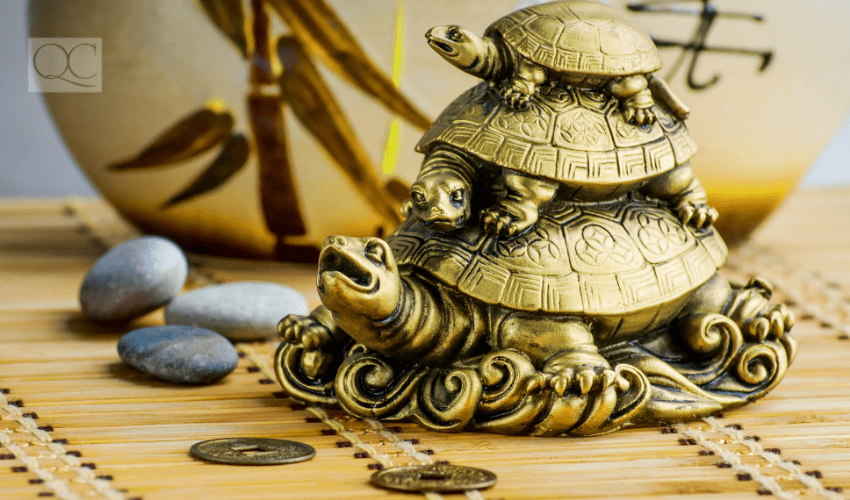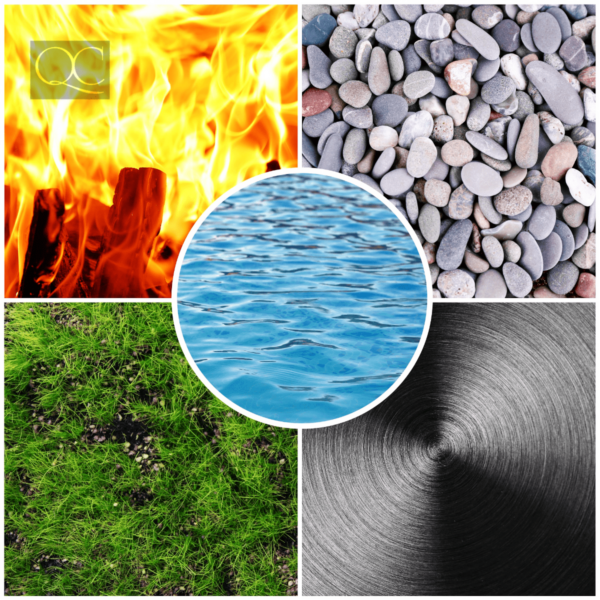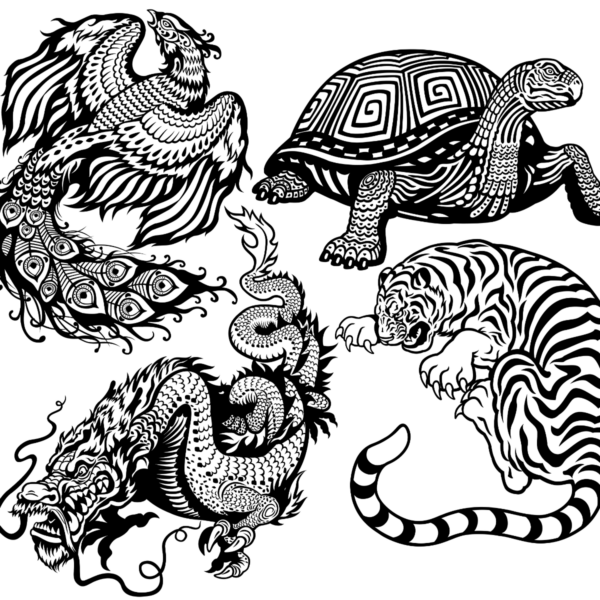The founder of Eastern Design and Home Staging, Ivy Ellerby is an Accredited Staging Professional and Advanced Feng Shui Design Professional. She is one of QC Design School’s leading tutors, specializing in Feng Shui, Home Staging, and Interior Decorating. As a renowned industry expert, Ivy uses her knowledge to help consumers increase profits on home sales and implement new design ideas into their living spaces.
Our home is an expression of ourselves. It can be seen as a container holding all of our hopes and dreams, while reflecting our fears and new ideas. It is the most common place for us to begin and end our day. Home is our charging station; a place to rejuvenate, plan our future, and celebrate our successes in the world. However, when our daily life no longer reflects life as we want it to be, we can turn to the principles of Feng Shui to support our desired changes.
Feng Shui brings clear intention into our environments, both at home and at work. It brings clarity and harmony, even at times when the world feels chaotic. (Did someone say, “2020”?!)
The core concepts of Feng Shui were created thousands of years ago. Lucky for us, this information was passed down generation-by-generation, so that we have this invaluable information organized into 4 central concepts.

Breaking Down Feng Shui Into 4 Main Concepts
1 – Ch’i
In order for an environment to have good Feng Shui, it must have a healthy flow of the universal life-giving force called Ch’i. Ch’i is the energy that permeates everything on our planet, including the energy inside our body. The energy inside and outside of building structures is also affected by Ch’i.
The challenge of a Feng Shui Consultant is to make sure that quality of this energy remains consistently flowing in a positive manner. When Ch’i is disrupted, our body experiences exhaustion, depression, irritability, and disease. But when Ch’i flows smoothly, we experience happiness, fulfillment, and a joyful outlook on life.
2 – Yin and Yang
A primary goal of Feng Shui is to create and maintain a balance in all areas of life. For instance, if our relationships with coworkers are bad, then our work life may suffer. The constant stress from work will eventually distress our health, which inadvertently would cause us to miss work more often. The lack of work attendance would affect our opportunity for promotions, or receiving a full paycheck. Thus, the cycle continues on, affecting all areas of our life!
Everything in the world is made up of a balance of energies known as Yin and Yang. When balanced, Yin and Yang energies bring harmony to our environment and give us ways to support the changes we experience in life. The symbol that represents these energies is the Taiji.

This symbol represents the idea that the two energies are constantly evolving and shifting. There is always a little bit of one in the other. Neither energy is absolute!
To understand the differences of these energies, think about how an airport feels. That environment is more ‘yang’ because of the movement, sounds, and lights. Now, contrast this environment with a cemetery. The energy feels dark, still, and quiet. It is very ‘yin’.
Although these two environments are very different, most environments in your every-day life are more blended. Certain rooms in our home should be more yang, such as the kitchen and family room. However, in our bedrooms, we want more yin energy to be there. This is because it will allow us be able to rest and rejuvenate ourselves peacefully.
3 – The Five Elements
Another way that Feng Shui creates balance in a home is by focusing on the five elements:
- Wood
- Fire
- Earth
- Metal
- Water
In order for an interior environment to support Ch’i – which, as I mentioned above, supports all areas of our life – these elements should be present. Incorporating these elements throughout the home can create good Feng Shui.
However, this ancient reference should not necessarily be taken literally. It’s merely an attempt to describe the essence of these five types of energy. Each of these energies are more easily understood through the association of these elements in nature.

Each element is associated with certain qualities, colors, and shapes that can be used as design elements – if you’d like to enhance those qualities in your home and life.
Wood
Wood is related to upward growth, healing, flexibility, and vitality. It is represented by green, blue, and teal. It’s also represented by tall, columnar shapes. Bamboo and houseplants are excellent examples of this element!
Fire
Fire represents expansion, passion, inspiration, and visibility. It is related to fiery colors like red and bright orange. Triangle shapes best represent the fire element. A fireplace, candles, and lights are all examples of this element!
Earth
Earth is related to stability, taking care of yourself, boundaries, and nourishment. It’s connected to earthy colors like yellow, orange, and brown. It’s also best represented by square shapes and heavy objects. Gemstones and terracotta pots are examples of this element!
Metal
Metal has the qualities of rigidity, contraction, lustrous beauty, and precision. White, gray, and metallic colors represent metal, as well as circular shapes. Metal statues and metal picture frames are awesome examples of this element!
Water
Water represents deep wisdom, freedom, freshness, and our connection to others and the world around us. Black, dark blue, and wavy shapes represent water. Artwork with water, aquariums, and fountains are all examples of this element!

Understanding and using the five elements is a complex analysis that a Feng Shui Consultant applies to a home or office.
4 – The Celestial Animals
The Four Celestial Animals are referred to as:
- Black Tortoise
- Green Dragon
- White Tiger
- Red Phoenix
I know, they all sound like characters from a mythological fairytale. But the names are actually derived from star constellations. They make it easier for us to learn and make reference to them!
In order for a home to have good Ch’i, it should be supported by these Celestial Animals. The Celestial Animals are not live animals, but rather a relative measure of landforms surrounding our home or office. The Four Celestial Animals energetically support the home, and are located at each of the four main compass directions outside of the home:
- North
- South
- East
- West

The Black Tortoise is located at the back of the property, facing north. In an ideal world, the mountain should be higher than the property. This will help it provide strong protection, support, and stability to the structure and inhabitants.
The left side of the of a structure is where we find the Green Dragon. It represents springtime, and brings wealth and prosperity to the property. It is represented by a hill, mountain, or neighboring property to the east of the property (where the sun rises).
The White Tiger is on the right side of the structure. The White Tiger is slightly more unpredictable than the other energies, so a careful balance must be considered with this animal. Lastly, the Red Phoenix is located at the front of the house. The Red Phoenix brings fame, special recognition, and new opportunities to the residents of the home.
In addition to these naturally occurring landscapes, the roads leading up to the house, hills, mountains, and waterways are also carefully analyzed. These pathways all intercept or encourage the movement of Ch’i around the property. Land that has a healthy, steady flow of Ch’i from these areas nourish the structure and its inhabitants. Just note that a property that has an overabundance of Ch’i directed towards it is not desirable!

Feng Shui Consultants analyze lots of information on the energy of the land, structures, and inhabitants before ever applying design concepts to a space. This is why Feng Shui is considered an Art and a Science. With thousands of years of information being collected and passed down, there is always something new to consider and learn about Feng Shui!


